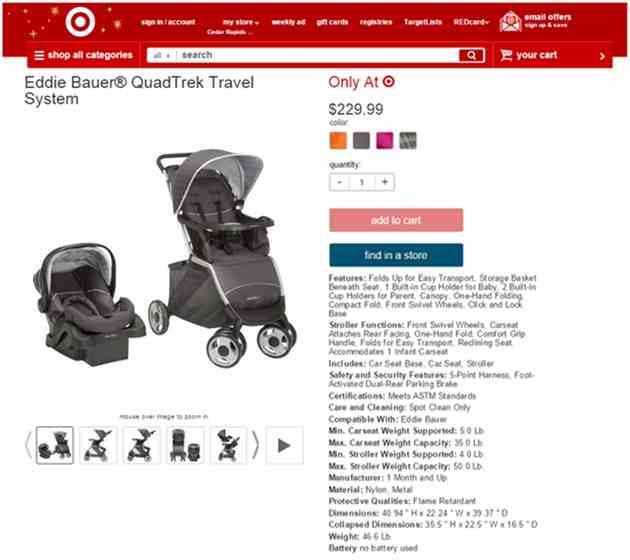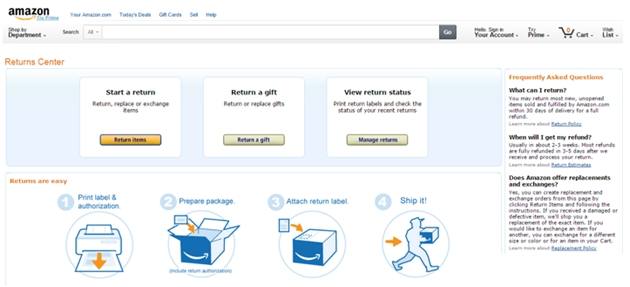The very definition of marketing is to entice customers by highlighting a product's value for the purpose of selling that product. Marketing is supposed to make you money—not cause you to lose money.
But if you aren't careful, that is exactly what can happen. Simple flaws in your marketing can lead to chargebacks. And there is nothing in the world of business that can drain profits faster and more pointlessly than a chargeback.
Chargebacks Explained
If you've been fortunate enough to evade chargebacks so far, you might not know what they are. But since very few businesses manage to avoid them altogether, you'd better understand the general idea: A chargeback is a forced credit card refund, initiated by the cardholder and executed by the credit card company.
What is the difference between a traditional refund and a chargeback?
If a customer contacts you for a refund, you get the product back. That means you can sell it again, though it might also cost you a few bucks to repackage it or restock it. But that's it. That's the extent of the negative ramifications of a refund.
A chargeback brings about a host of losses:
- First, the customer keeps the item in question. That means you've lost any chance to sell it again.
- Next, the bank will charge an administrative fee for each chargeback you receive (it could be as much as $70 each).
- Finally, if you receive too many chargebacks in a month, the bank will just close your merchant account (if you want to get into the nitty-gritty, the bank will usually terminate an account if your chargeback-to-transaction ratio is above 1%). That means you'll have to close your business: How can you expect to sell anything if customers can't pay by credit card?
If you do lose your merchant account, it could take years to get another. You'll be placed on the MATCH list for five years. If you do get a new account, it will be considered "high risk" and the accompanying fees will be steep.
Prevention Is Your Only Option
All that sounds pretty terrible, right? It is. Managing chargebacks is a nightmare.
Banks are notorious for siding with the customer. The merchant has to provide written documentation that contradicts the cardholder's claim, and that information is usually hard to come by.
In fact, chargeback management is so complex, there are entire companies designed just to help merchants keep things in check. Explaining how to dispute a chargeback would take an entire book—not just a single article.
Since we can't thoroughly cover chargeback disputes, it's a good thing we can adequately address one area of chargeback prevention: your marketing tactics.
Your Website and Marketing Could Be Causing Chargebacks
We all know about the complexity of website design. Not surprisingly, the design of a site could influence profits—in a good or bad way.
Here are some specifics on how your website design and marketing efforts could be leading to chargebacks.
1. Your product descriptions aren't descriptive enough
In a brick-and-mortar world, customers can handle your products. They can pick up that shoe, look at the craftsmanship, feel the materials, match the color to a garment, and even try it on to see if it fits.
In the world of e-commerce, you need to provide the information their senses crave. At the very least, your product descriptions should include the following:
- Size (length, width, height)
- Weight
- Color options
- Materials used
- Care instructions
- Construction details
- Power usage or requirements
Not all of those characteristics will apply to what you sell. And there are many more I didn't list. The point is... give customers everything they could possibly want.
Credit card companies assign applicable categories (reason codes) to each chargeback issued, to help you determine why the complaint was made. One of the most popular chargeback reason codes is "goods or services were not as described."
Don't let customers think you are trying to pull a bait-and-switch. Be honest in your product descriptions. Be clear and concise, yet rich in detail.
Once you've got the wording figured out, go nuts with the images. Seriously, take a photo of everything. Show the product from all angles. Zoom in on nifty details. Give examples of all the color options.
2. Your contact information is a needle in a haystack
If customers have a grievance regarding an item, they have two options: contact you for a refund, or contact the bank for a chargeback. If you want customers to contact you, they will need your contact information...
If a customers are on the verge of filing a chargeback, they probably aren't too happy with you or your products. If they have to search high and low for your contact information, that won't make the situation better.
Put your basic information (phone number and email address) on every page of your website. Then, design a killer "contact us" page. Include all possible means of contact:
- Email address
- Phone number
- Physical address
- GPS coordinates
- Live chat
- Department-specific information
- Fax number (even if hardly anyone uses those anymore)
3. Your policy page reads as if it's written in Latin
Many businesses don't give much thought to their policy page. It's just a technicality, right? Like Terms of Service agreements... no one actually reads those things.
Wrong. Anyone who wants money back after a bout with buyer's remorse wants that information. Anyone who bought the wrong size and needs to know how to get a different garment is interested in that information.
A policy page (in plain English) is just as important as a contact page. If customers don't know how to get a refund from you, they'll get one from the bank.
After you've designed your stellar policy page, show it off a little. Include a link to your policy page in each newly crafted product description. Let the customers know what they'll have to do for a refund before they even make the purchase.
Then, include the link in the confirmation email that goes out after the transaction is made.
Conducting a website audit is a great way to begin the chargeback prevention process. But you aren't done yet.
4. Old-school customer service is ignored
For customer service, you need to go back to the basics. Here is a revolutionary technique: Answer the phone when it rings. (You're flabbergasted by this nugget of wisdom, right?)
If customers are calling you about a purchase, they're probably already a little heated. Make them sit on hold forever... and they'll be ready to boil over by the time you get to them. Answer the phone within three rings.
If you followed the previously mentioned advice, you now have an amazing contact us page. But having the page isn't good enough. You need to actually acknowledge the people who use it. Send an auto-reply email to all messages you receive. Let visitors know you've received their inquiry and will address it shortly. If possible, give a time frame. Your "soon" and the customer's expectation of a timely response could be vastly different.
Follow up within a few days with a personalized message that addresses the concerns expressed by the customer.
5. Your social media isn't social
You can find millions of articles online bragging about the effectiveness of social media marketing. I don't discount those ideas. I just want to tell you there is more to social media than marketing alone.
Customers use social media as a form of communication (they appreciate the "social" aspect). That means they also expect you to use it for communication.
Check your accounts regularly. Reply to the customer's comments. And don't just offer generic platitudes. Really take the time to provide useful, applicable responses.
A bonus: addressing customer grievances in a public forum helps build your street cred.
6. Your buzzwords go too far
Nailing down the specific aspects of your marketing campaign—like your website—will make a big difference in your chargeback management scheme. But to be truly successful, you need to take a look at your marketing big picture.
Marketing is all about making your products and services look as good as possible. You want to shine a spotlight on all the things you're doing right.
But there is a fine line between being making your stuff look good and outright lying. Make sure your marketing campaign is truthful, realistic, and still flattering.
Again, don't get caught up in chargebacks because "products or services are not as described."
7. You count chickens before they're hatched
If you say service X will be ready on date Y, then it had better be ready. This is especially true in situations where customers pre-order something. A customer could file a chargeback if it takes too long for you to follow through.
Again, check your marketing campaign. Are you being realistic about the timeline you've advertised?
* * *
Chargeback management is a big, broad issue. But focusing on your marketing and really perfecting the way you portray your products will go a long way toward retaining those hard-earned profits.
Have you encountered a chargeback? If so, would you mind telling us about it? How did you change your marketing and management techniques as a result?







